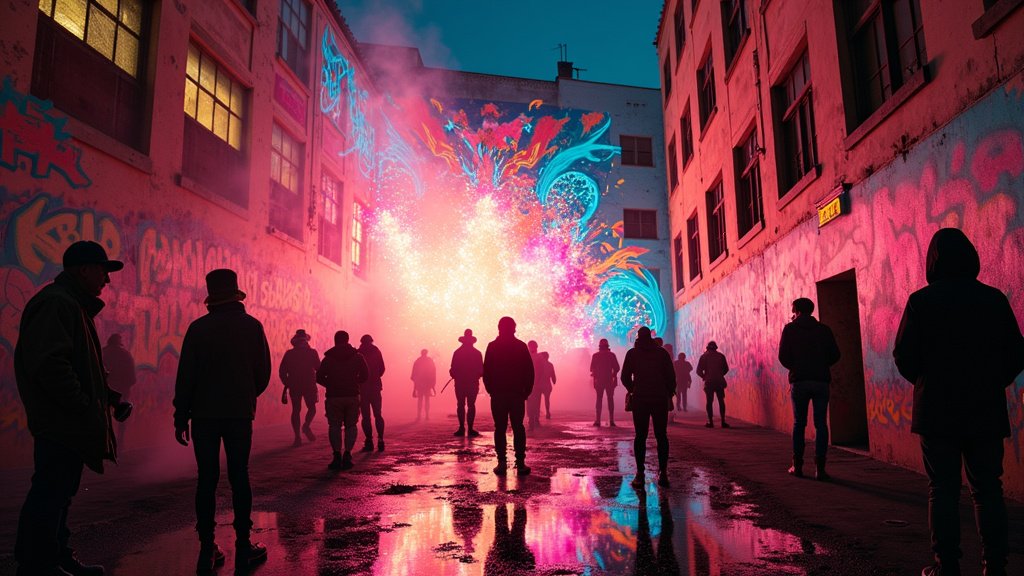A new Netflix documentary series, “Trainwreck,” is delving into the stories of infamous cultural phenomena, with a recent installment focusing on the controversial fashion brand American Apparel. Titled “Trainwreck: The Cult of American Apparel,” the episode has drawn significant attention for its exploration of the company’s meteoric rise, distinctive brand identity, and the figure behind its most provocative elements. A commentary piece published by the Los Angeles Times examines the documentary’s perspective, particularly its portrayal of the ubiquitous American Apparel billboards that once dotted the urban landscape of Los Angeles [16].
Examining “Trainwreck: The Cult of American Apparel”
The “Trainwreck” series typically scrutinizes individuals or entities that generated intense followings and subsequent controversy or downfall, often exploring dynamics akin to a ‘cult.’ By dedicating an installment to American Apparel, the series signals its intent to dissect not just a business story, but a cultural narrative centered around an influential, yet divisive, personality and the environment he cultivated within the company. The documentary promises to peel back the layers of the brand’s public image, revealing the inner workings and the often-turbuous reality behind the scenes.
The American Apparel Phenomenon
American Apparel emerged as a distinct voice in the fashion industry, initially celebrated for its commitment to manufacturing garments in downtown Los Angeles. This “Made in USA” ethos resonated with a segment of consumers seeking ethical production and locally sourced goods. The company’s aesthetic centered on simple, comfortable basics, but its marketing strategy was anything but basic. From its inception, American Apparel embraced a highly sexualized and often controversial advertising approach that became instantly recognizable.
The Infamous Los Angeles Billboards
The Los Angeles Times commentary highlights the documentary’s focus on the impact of American Apparel’s advertising, particularly the billboards prominently displayed throughout Los Angeles. These large-format advertisements were central to the brand’s visual identity, featuring young models, often styled in minimal clothing and posed in suggestive ways. While intended to be provocative and attention-grabbing, they frequently drew criticism for alleged objectification and exploitation.
The commentary piece from the Los Angeles Times specifically notes how these visual displays, for many observers, “felt more like criminal evidence than advertisements” [16]. This powerful description underscores the intensity of the public reaction and the ethical questions raised by the company’s marketing choices. The documentary, according to the commentary, appears to explore why they elicited such a strong, negative response and how they factored into the broader narrative of the company and its leadership.
The Man Behind the Brand
The documentary title, “Trainwreck: The Cult of American Apparel,” strongly suggests that a central theme is the influence of the company’s founder, referred to by the Los Angeles Times commentary’s source headline as “the man behind the sleazy billboards.” The term ‘cult’ in the title implies an examination of leadership style, corporate culture, and the dynamics of power within the organization. The documentary likely explores how the founder’s personality, vision, and management practices shaped not only the business operations and the controversial advertising but also the relationships and experiences of employees and models associated with the brand.
Documentary Insights and Legacy
The “Trainwreck” installment on American Apparel is expected to weave together interviews, archival footage, and commentary to provide a comprehensive look at the company’s trajectory. It will likely cover the early successes driven by the ‘Made in USA’ appeal and basic apparel, the increasing reliance on provocative advertising, the mounting controversies and allegations surrounding the founder, and the eventual financial struggles and sale of the company.
The documentary’s portrayal of the Los Angeles billboards as feeling “more like criminal evidence than advertisements” [16] serves as a poignant symbol of the brand’s complex and often troubled identity. It highlights how marketing, intended to build a brand, can also become a flashpoint for ethical debate and ultimately contribute to public perception and legacy.
The commentary piece from the Los Angeles Times suggests that the documentary offers a critical lens on American Apparel’s history, particularly focusing on the intertwined nature of its founder’s leadership, its controversial advertising strategy, and the eventual unwinding of the company. It positions the documentary as a key resource for understanding the rise and fall of a brand that left an indelible, albeit sometimes uncomfortable, mark on fashion, advertising, and urban landscapes like Los Angeles.





